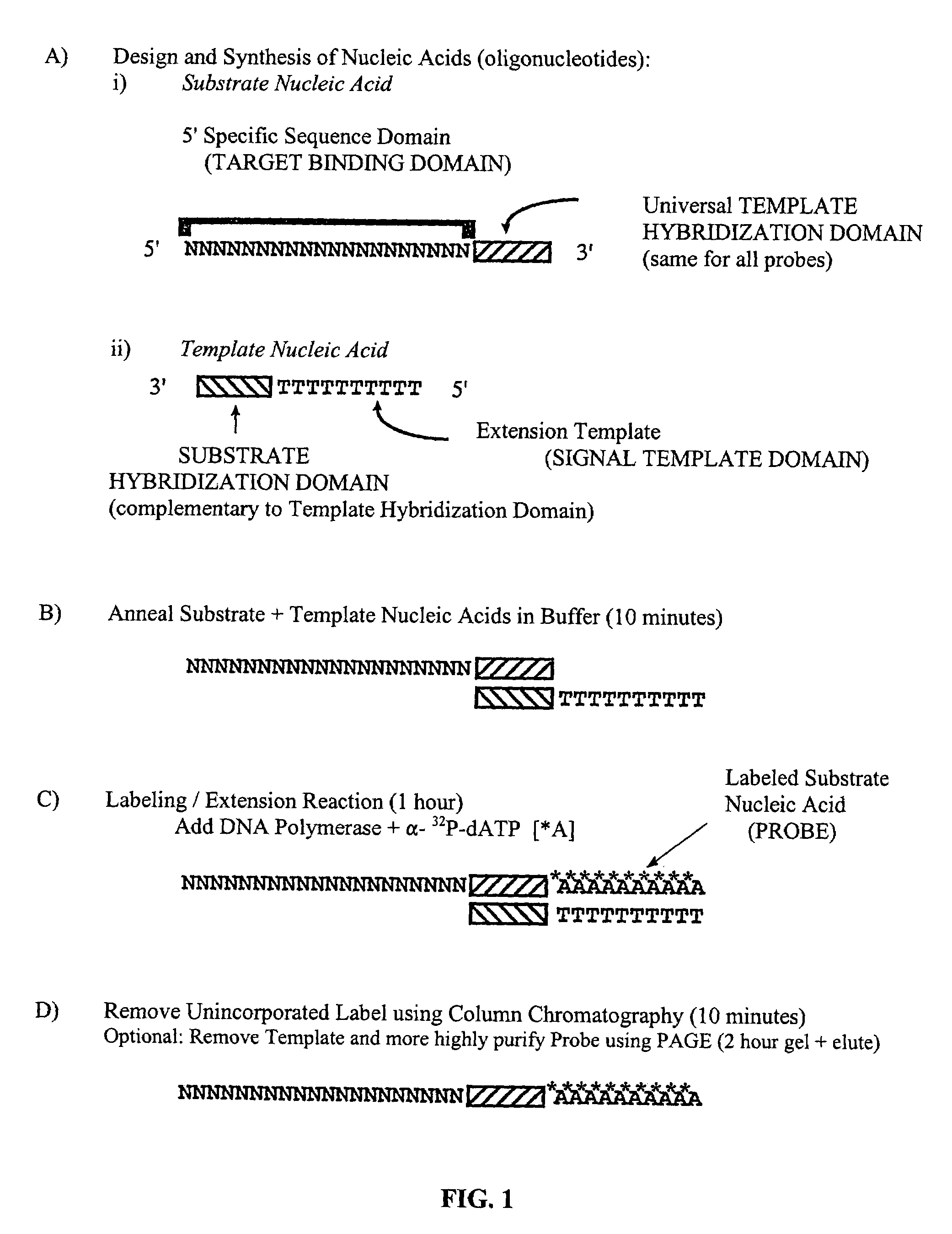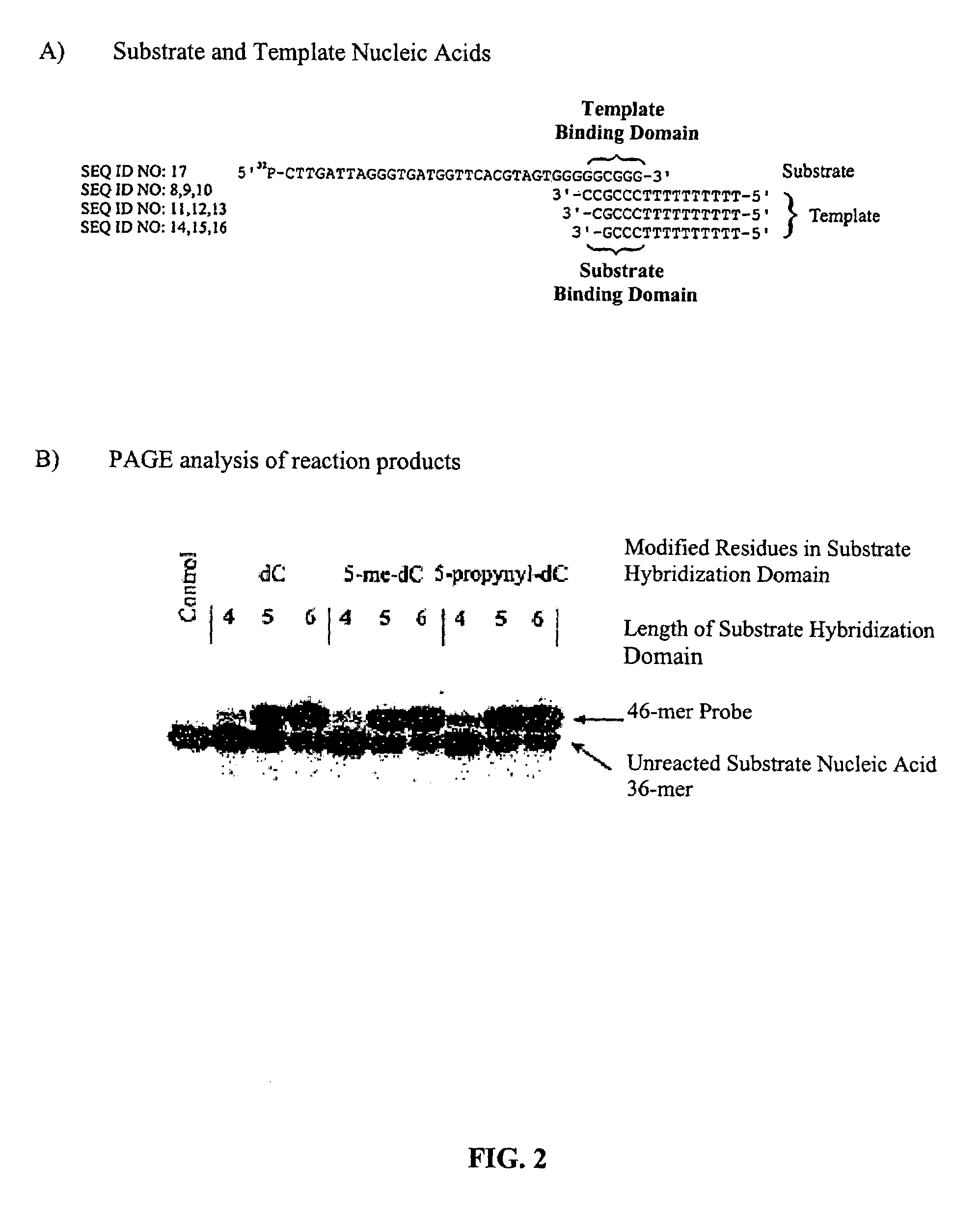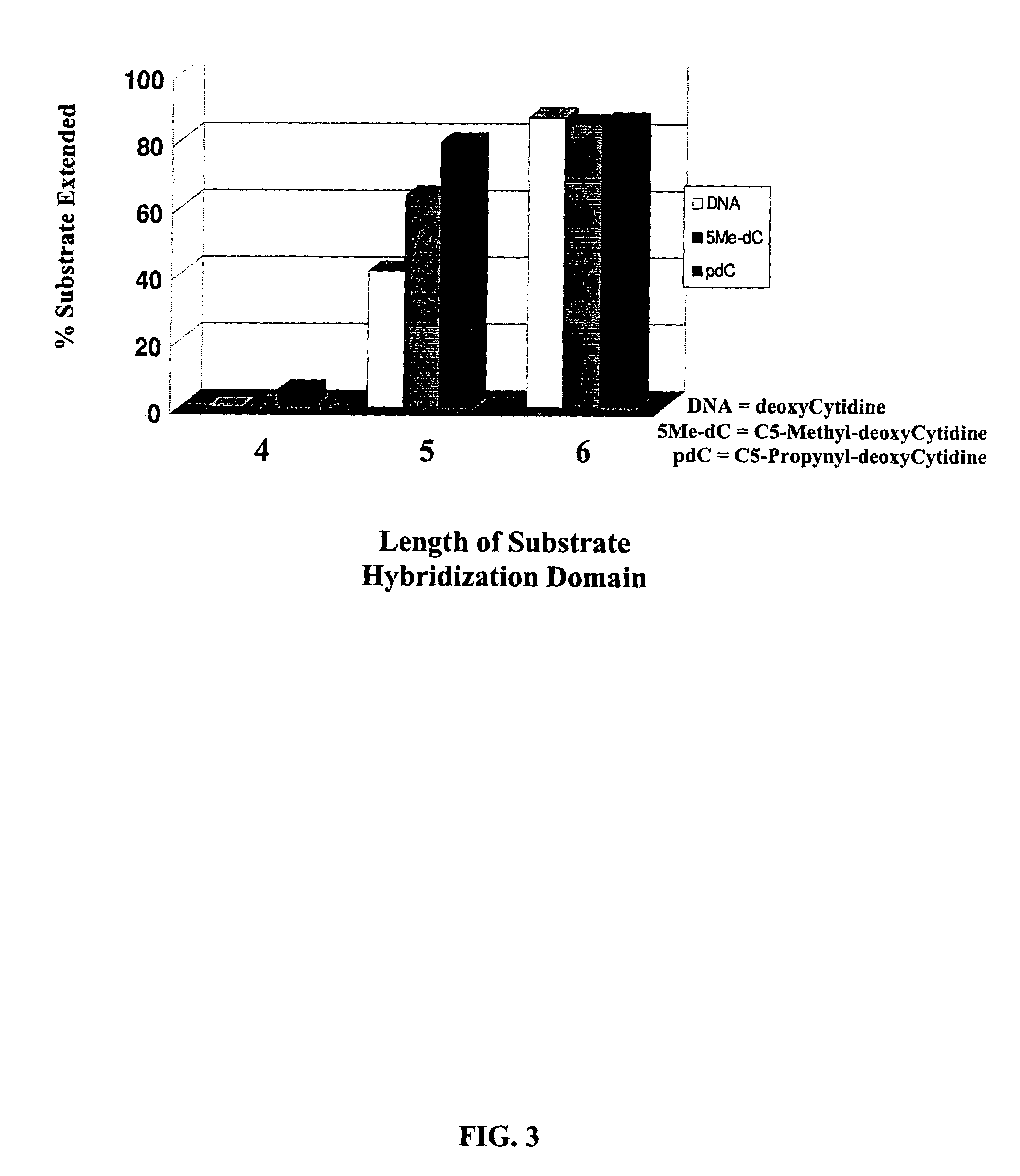Primer extension methods for production of high specific activity nucleic acid probes
- Summary
- Abstract
- Description
- Claims
- Application Information
AI Technical Summary
Benefits of technology
Problems solved by technology
Method used
Image
Examples
example 1
6. EXAMPLE 1
Efficiency of the Primer Extension Reaction with Substrate and Template Nucleic Acids
[0150]6.1 Materials and Reagents
[0151]The following reagents were used for polynucleotide (PNK) reactions: an oligonucleotide substrate; T4 PNK (NEW ENGLAND BIOLABS™); γ−32P-ATP, 6000 Ci / mmol (Amersham); the buffer: 70 mM Tris pH 7.6, 10 mM MgCl2, and 5 mM DTT; TE (10 mM Tris pH 8.0, 1 mM EDTA); and, distilled, deionized water.
[0152]The following reagents were used for primer extension reactions: a PAGE purified Substrate oligonucleotide with a 3′ Binding Domain; PAGE purified Template Nucleic Acid; 10× stock buffer (100 mM Tris pH 7.5; 50 mM Mg Cl2 75 mM DTT); a stop solution (10 mM EDTA); 10 μM dATP (unlabeled); and exo−Klenow DNA polymerase (5 units / μl, NEW ENGLAND BIOLABS™).
[0153]Equipment and supplies included: 500 μl microfuge tubes; 1.5 ml screw cap microfuge tubes; SEPHADEX™ (G25 spin columns); a waterbath set to 94° C.; a waterbath set to 37° C.; a tabletop microcentrifuge; and ...
example 2
7. EXAMPLE 2
Comparison of Sensitivity of Probes Labeled Using T4 and Primer Extension
[0169]7.1 Materials and Reagents
[0170]Reagents and materials used to label the Substrate Nucleic Acid at the 5′ end using T4 PNK and at the 3′ end by primer extension were identical to those previously described in Example 1 (Section 6, supra). with the exception that α-32P-dATP (6000 Ci / mmol, Amersham) was substituted for unlabeled dATP in the primer extension reaction.
[0171]In this example, based on kit format, both the Substrate Nucleic Acid, a 36-mer, and Template Nucleic Acid a 16-mer, are provided lyophilized. The Substrate Nucleic Acid is the same as used in Example 1 and contains a 30 base specific sequence at the 5′ end complementary to the target plasmid pGreenLantern™-1 and a 6 base 3′ end Template Hybridization Domain, GGCGGG (SEQ ID NO:1). The Template Nucleic Acid consists of a 10 base oligo-dT sequence Signal Template Domain at the 5′-end, a 6 base 3′ Substrate Hybridization Domain co...
example 3
8. EXAMPLE 3
Comparison of Sensitivity of Probes Labeled by Primer Extension and by T4 Polynucleotide Kinase in a Northern Blot Assay
[0184]8.1 Materials and Reagents
[0185]Reagents and materials used to label the Substrate Nucleic Acid at the 5′ end using T4 PNK and at the 3′ end by primer extension were identical to the methods previously described in Example 2 (Section 7, supra). In this example the Substrate Nucleic Acid, a 36-mer, and Template Nucleic Acid, a 16-mer, are again provided lyophilized. The Substrate Nucleic Acid contains a 30 base specific sequence at the 5′ end complementary to the human β-actin mRNA and the standard 6-base 3′ end Template Hybridization Domain. The Template Nucleic Acid is comprised of a 10-base oligo-dT Signal Template Domain sequence at the 5′-end, a 6-base 3′ Substrate Hybridization Domain complementary to the Template Hybridization Nucleic Acid Domain of the Substrate, and is blocked with a 3′-amino-modifier-C7 group.
[0186]The Substrate Nucleic A...
PUM
| Property | Measurement | Unit |
|---|---|---|
| Fraction | aaaaa | aaaaa |
| Fraction | aaaaa | aaaaa |
| Fraction | aaaaa | aaaaa |
Abstract
Description
Claims
Application Information
 Login to View More
Login to View More - R&D
- Intellectual Property
- Life Sciences
- Materials
- Tech Scout
- Unparalleled Data Quality
- Higher Quality Content
- 60% Fewer Hallucinations
Browse by: Latest US Patents, China's latest patents, Technical Efficacy Thesaurus, Application Domain, Technology Topic, Popular Technical Reports.
© 2025 PatSnap. All rights reserved.Legal|Privacy policy|Modern Slavery Act Transparency Statement|Sitemap|About US| Contact US: help@patsnap.com



